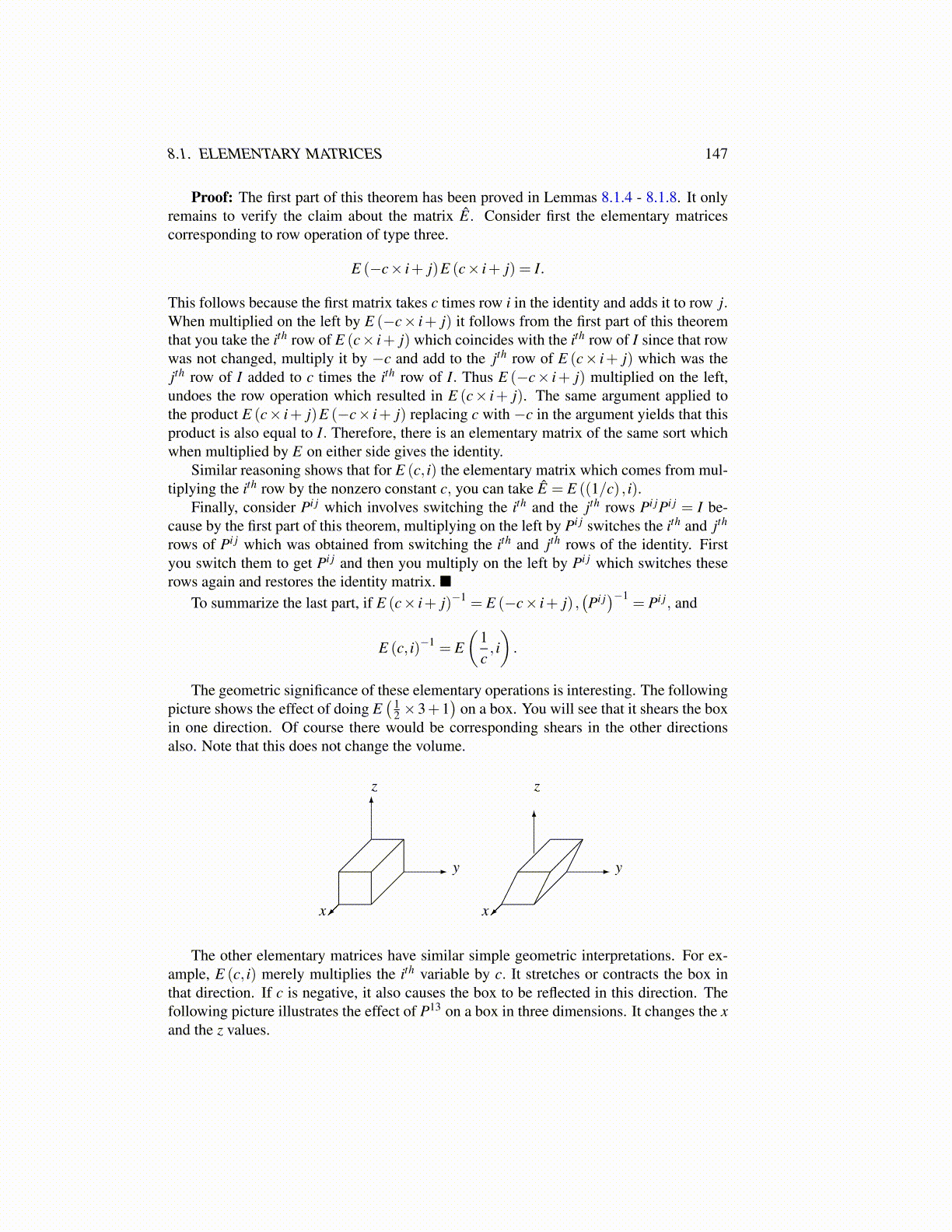
8.1. ELEMENTARY MATRICES 147
Proof: The first part of this theorem has been proved in Lemmas 8.1.4 - 8.1.8. It onlyremains to verify the claim about the matrix Ê. Consider first the elementary matricescorresponding to row operation of type three.
E (−c× i+ j)E (c× i+ j) = I.
This follows because the first matrix takes c times row i in the identity and adds it to row j.When multiplied on the left by E (−c× i+ j) it follows from the first part of this theoremthat you take the ith row of E (c× i+ j) which coincides with the ith row of I since that rowwas not changed, multiply it by −c and add to the jth row of E (c× i+ j) which was thejth row of I added to c times the ith row of I. Thus E (−c× i+ j) multiplied on the left,undoes the row operation which resulted in E (c× i+ j). The same argument applied tothe product E (c× i+ j)E (−c× i+ j) replacing c with −c in the argument yields that thisproduct is also equal to I. Therefore, there is an elementary matrix of the same sort whichwhen multiplied by E on either side gives the identity.
Similar reasoning shows that for E (c, i) the elementary matrix which comes from mul-tiplying the ith row by the nonzero constant c, you can take Ê = E ((1/c) , i).
Finally, consider Pi j which involves switching the ith and the jth rows Pi jPi j = I be-cause by the first part of this theorem, multiplying on the left by Pi j switches the ith and jth
rows of Pi j which was obtained from switching the ith and jth rows of the identity. Firstyou switch them to get Pi j and then you multiply on the left by Pi j which switches theserows again and restores the identity matrix. ■
To summarize the last part, if E (c× i+ j)−1 = E (−c× i+ j) ,(Pi j)−1
= Pi j, and
E (c, i)−1 = E(
1c, i).
The geometric significance of these elementary operations is interesting. The followingpicture shows the effect of doing E
( 12 ×3+1
)on a box. You will see that it shears the box
in one direction. Of course there would be corresponding shears in the other directionsalso. Note that this does not change the volume.
x
y
z
x
y
z
The other elementary matrices have similar simple geometric interpretations. For ex-ample, E (c, i) merely multiplies the ith variable by c. It stretches or contracts the box inthat direction. If c is negative, it also causes the box to be reflected in this direction. Thefollowing picture illustrates the effect of P13 on a box in three dimensions. It changes the xand the z values.